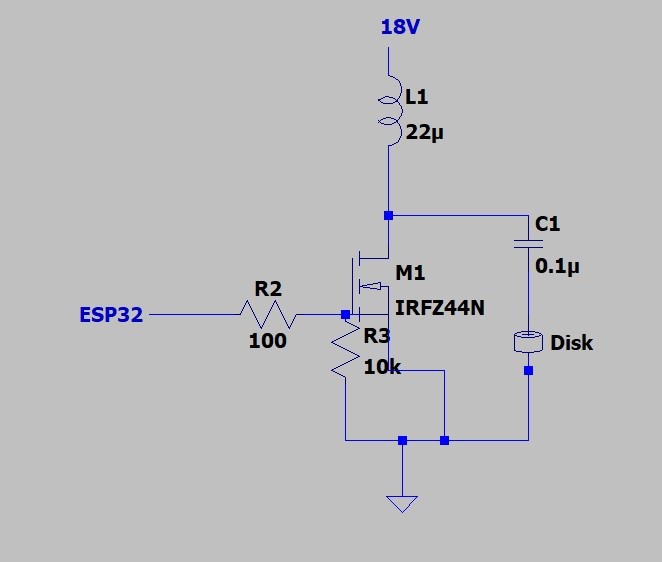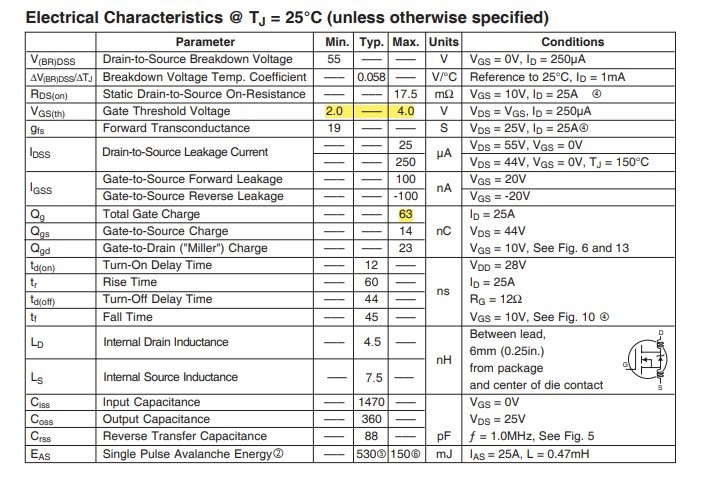I've been wanting to build an ultraponic system for a few years now.
My very first system was just a bucket of water, the lid was pierced to accommodate 4 plants and a mister floated into the water to create mist. Sorry I no longer have pictures.
I simply bought a ready to use mist maker. You just have to plug a 24V DC power supply and immerse it in enough water to make it work.
The mist maker contains the electronics needed to vibrate the disk. The electronics is embedded into resin to make it waterproof and uses the water for cooling (clever).

But it heated up the water and was too big for my project! I had to figure out how to remove the electronics from water to avoid temperature rise.
The ready to use mist maker uses a Colpitts oscillator which activates a transistor, you can find the schematics easily on internet.
As I used an ESP32, I prefered to use a MOSFET.
The first electronics circuit :

I turned it on ! And nothing ...
The MOSFET did not switch fast enough. Let's take the IRFZ44N datasheet to understand my mistakes.

At lower frequencies this circuit works (it's the circuit for the 110 kHz disk just the coil and the frequency change), but at 1.7 MHz we need to turn on the MOSFET as fast as possible.
The ESP32 can deliver 3.3V through its pins but we need a voltage above the Gate ThresHold Voltage of the IRFZ44N which is between 2.0V and 4.0V.
Now to have a good switching speed we need to charge and discharge the gate as fast as possible.
- Dt = dQ /i_gate
In my first circuit this gives us :
- Dt = 63 nC / 0.033A = 1909 ns
If we now take a voltage of 5V with a gate resistance of 10 Ohm :
- Dt = 63 nC / 0.5 A= 126 ns
The possible switching frequency is now 3.9 MHz
This is perfect but the ESP32 can't handle the 0.5 A current, we need a mosfet driver.
I chose the Microchip's TC4424 driver.
Here is the schematics:

I turned it on! It worked!
However, the MOSFET heats up quite quickly, it needs a fairly large heat sink to allow continuous operations.
And even though I removed electronics from water, it still heats up to 40°C, which is explained by the vibrations of the disk and the small volume of water.
I have learned a lot from this 1.7 MHz disk but I can't use it because water temperature has to be between 18 and 25 °C for hydroponics systems.
I am not an electronic expert so it is possible that there is a better way to vibrate this 1.7 MHz disk. Also one could imagine using this kind of disk in colder countries than mine where water may require to be warmed a little.
ESP32 code to generate the PWM at 1.7 MHz is fairly straigthforward:
#define MIST1_PIN 19
// setting PWM properties
const int freq = 1700000; //IMPORTANT
const int ledChannel = 0;
const int resolution = 1; //IMPORTANT
const int dutyCycle = 1; //IMPORTANT
void setup() {
// configure LED PWM functionalitites
ledcSetup(ledChannel, freq, resolution);
// attach the channel to the GPIO to be controlled
ledcAttachPin(MIST1_PIN, ledChannel);
ledcWrite(ledChannel, dutyCycle);
}
 J Gleyzes
J Gleyzes
Discussions
Become a Hackaday.io Member
Create an account to leave a comment. Already have an account? Log In.